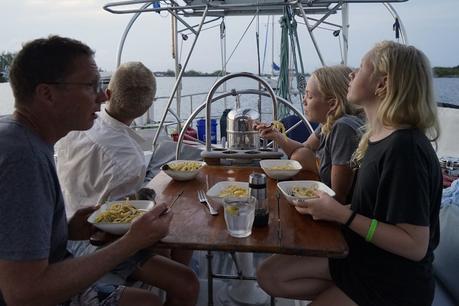

We don’t provision as deeply as we used to. People everywhere have to eat, and you can almost always meet your needs wherever you are in the great wide cruising world–it just may not look like the grocery shelves at home. There are a few scenarios where it really makes sense to provision deeply:
- Weeks of passagemaking (or, remote destinations without supplies)
- High costs in the cruising destination ahead
- Low selection shops ahead
I’ve skewed to relying more on what we find locally, using pantry locker space for specialty items or things we don’t dare run out of (coffee!). Adapting your diet is part of the fun, if not occasionally an adventure! But in the Bahamas, we’d have both #2 and #3 on the list: fewer shops (and not as much on the shelves) coupled with higher costs. For the first time since leaving South Africa last year, it was time for major provisioning.
Preparation began weeks before we left, stocking up on household products like tissues, paper towels, and kitchen sponges, plus staples we’ll go through like coffee and tortillas. Grateful for friends with Costco memberships, thank you Patty!
When deep provisioning like this, I turn to old-school tricks for storing food without refrigeration: we have a shoebox-sized freezer, and the usual top-loading boat fridge that only holds so much. I started by canning a dozen pint jars of chicken for my omnivore family (see my canning how-to here). New friend Jim invited me on his weekly venture to a massive swapmeet-style open market early one morning in Fort Lauderdale.
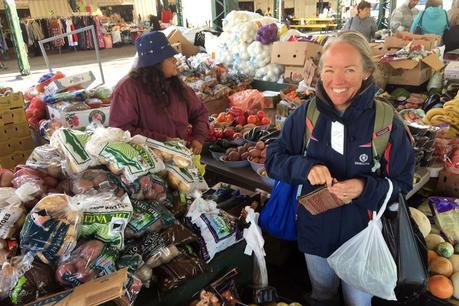
photo credit, and gratitude, to Jim Beran. Wow, it really was chilly enough for a foulie jacket!
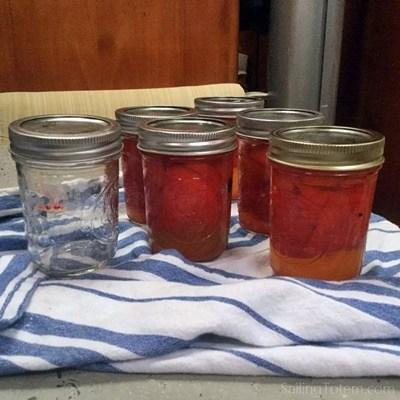
Three weeks later, the green tomatoes I bought in a Fort Lauderdale open market are still in stages of ripening. Limes, lemons, cabbage, potatoes, and carrots are stashed for long term storage. I had to refresh my knowledge on storage techniques, and read Carolyn Shearlock’s (of The Boat Galley) new book, Storing Food Without Refrigeration just in time. Which fruit has to be far from the potatoes? Which vegetables can be in close proximity? It’s all in this comprehensive reference of techniques to extend your pantry on board. Our fridge is full but the tips within help me make optimal use of our storage.
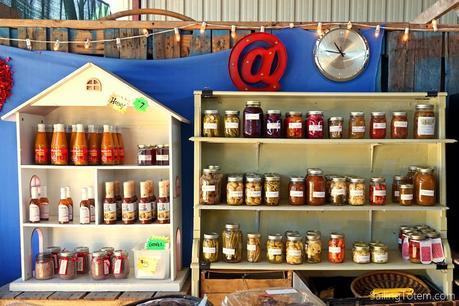
Canning inspiration at the Jacksonville farmer’s market
Stocking up meant cleaning out and inventorying the contents of lockers. I’m a little embarrassed at the “finds” which emerged, but they’re a sweet little travelogue. A package of Knödel mix—a German potato dumpling, purchased in Namibia—had fallen behind boxes of pasta and carried up the Atlantic. Niall made a PBJ sandwich with preserves from South Africa and a jar of peanut butter that—reading the label—I’m pretty sure we bought in Maldives. Yes, that was about two years ago. Yes, it’s fine! The lockers are now packed up again, with a list of the contents taped to the inside for us to strike off as they’re consumed.
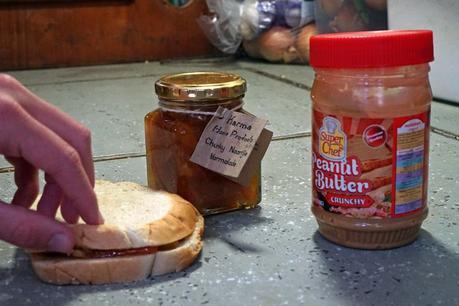
Arriving in Bahama’s Berry islands was sweet. I’ve traded email with Carla for a few years and looked forward to meeting her and her family in person in Great Harbour Cay. With help from another cruiser (thank you Jay!) we were trundled into vehicles and got the full tour of the island.
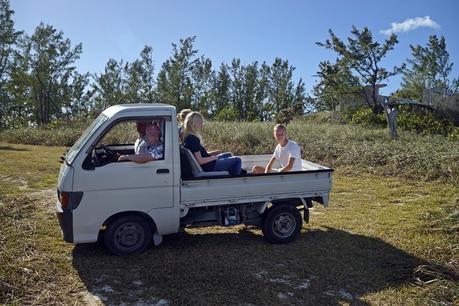





Part of our introduction included a pass by the grocery stores, which validated everything we prepared for. The first market in Bullock Harbor charged about 4x the cost per roll of TP. Milk? The UHT boxes on the shelf added up to $15 per gallon. OUCH. This, Niall, is why I’ll be mixing up powdered milk we bought in Florida for your beloved Grape-Nuts cereal. Below is about half of the area of the grocery store : a pallet of flour, cases of bottled water, a couple of chest freezers, and the refrigerator section.
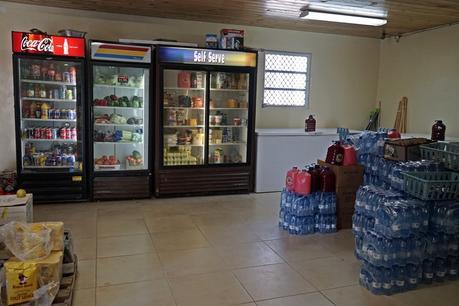
…and this is the other side, with dry goods. Some items are subsidized and relatively affordable: butter, cheese, and grits. Hello, cheese grits!
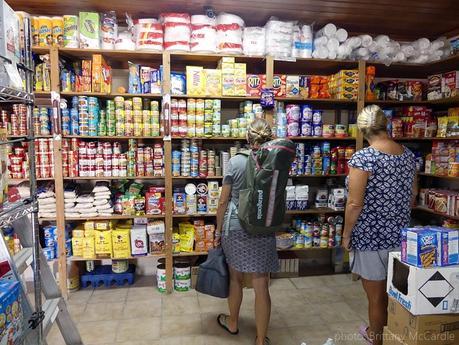
Photo: Brittany from SV Gromit, @afamilyatsea
There will still be favorites from home you simply can’t buy, another reason to provision: specialties and treats. For the Mahi crew’s little boy, Ethan, that treat is chocolate flavored rice cakes…so we brought him some from Florida. His reaction was priceless!
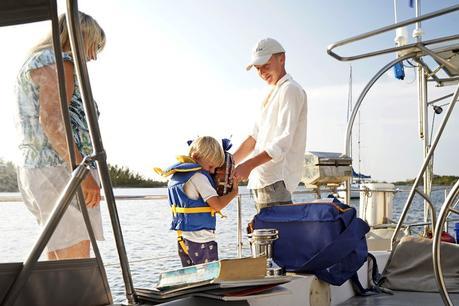
The Mahi crew had recently stopped in the big town of Nassau to provision, where as Carla related, a grocery cart that might have run $150 at home was over $300 at the register. But proximity to the US and frequent flights meant the selection is similar to home, and thus the lettuce. “I miss salads,” said Niall. “And I’ll miss milk, and bacon.” Don’t worry…we have enough bacon for a few months.
Provisioning posts are tagged: read more here.

